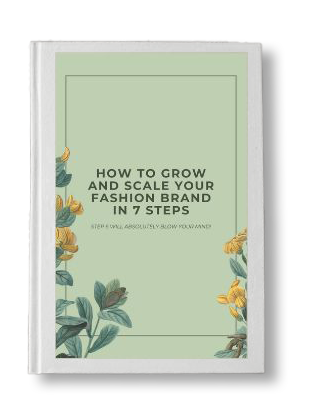In a perfect world, inconsistent sizing wouldn’t exist. Instead, consumers would navigate effortlessly through dozens upon dozens of brands and their collections.
Unfortunately, that’s not the case.
In a frustrating reality for far too many people – and especially women, size charts differ from brand to brand. Shopping was supposed to be a joyful pastime, yet it has transformed into an exhausting, frustrating experience.
Your customers probably encounter the same issue. It’s not your fault as a brand.
Unfortunately, you (and your sales) are still negatively affected.
The culprit?
Clear measurement method, but total anarchy when it comes to size labeling
Most women know the basics of measuring the parts of their body. Keeping these in mind is supposed to speed up their shopping process.
It’s supposed to make it easier for them to find clothing that actually fits.
On paper, the fundamentals are easy as pie:
For the majority of consumers, this is clear enough. It might take them a try or two, but they will nail their body measurements in a few minutes.
If only this were sufficient…
Things get messy when consumers have to navigate through actual size guides. Different brands provide different sizes and herein lies the confusion.
An Asos size chart might tell a woman that her 36” bust means she’s a size 6.
Well, H&M begs to differ. A size 6 could easily mean a 34 ½” bust when looking at their dresses. In fact, a 36” bust with this particular brand pushes her closer to size 8 territory.
What happened?
Inconsistent sizing (sometimes also dubbed vanity sizing or size inconsistency) happened.
Even when consumers know their measurements perfectly, they find out it’s insufficient for a smooth shopping experience. Sizes across brands differ drastically. Customers need to either possess encyclopedia levels of knowledge regarding size specifics or conform to the frustrating reality of shopping around.
Why is inconsistent sizing so prevalent in women’s fashion, even now?
There are a few main factors leading to this confusing state in garment size labels.
Reason #1 is branding efforts.
Every brand has a specific target audience, much like you do. Some cater to young, hip people. Others are focused on more mature and more style-conservative demographics.
We’re talking about the concept of the core customer here. In reality, brands center their sizing strategy around what this core customer looks like.
Sure, they use available size tables. However, these are merely a voluntary guideline, a basic starting point that is then molded by the aforementioned customer.
Consumers go through transformations. As they switch from one life stage to another, their fashion preferences often change. Up until now, they’ve been a specific core customer – now they’re another.
This process can even be more episodic or temporary. Spicing up their wardrobe, a new piece of clothing for a specific event…Plenty of reasons for core customers to change.
A quick example would be Forever 21 and Old Navy. Their core customers differ quite a bit, right?
This is why Forever 21 and Old Navy clothes have very different fit and sizing.
Such practices are quite understandable. Having a core customer is crucial for your branding strategy. However, this approach also serves as a foundation for frustrating inconsistent sizing.
Reason #2 is the rich diversity of women.
Size inconsistency is nothing new. It’s been around for decades, even centuries possibly as discussed by plenty of designers and researchers.
Yet the US has become increasingly diverse over the past century, with a variety of ethnicities comprising the fashion market. Lifestyle changes have also allowed for further diversification of fashion choices – the simplest example would be the rise of career women.
Last but not least, we see more size inconsistency with female fashion as compared to men’s or children’s garments.
Why?
Because all these processes of diversification come on top of the fact that women come in all shapes and sizes, in much more abundance than men. Female fashion also goes through more rapid changes and much more seasonality.
As a result, there are categories upon categories! Petites or misses, maternity fashion, plus size clothing – only to name a few. Considering every category can be broken down into a subcategory of its own, thereby creating its own sizing system…
Well, it’s no surprise that sizing charts have become so complicated!
Women’s clothing has never been as straightforward as men’s fashion. It involves a good amount of guesswork and gaps that risk inaccuracy.
Why is size inconsistency so prevalent in women’s fashion, even now?
Let’s face it.
A lot of brands don’t do much to alleviate this unfortunate situation. Still, some have made beginner steps in providing a more transparent approach to sizing.
A good example would be Levi’s Curve ID line. Instead of only sticking to usual sizes, this line goes further by catering to three different female shapes. It started with three variations – Slight, Demi, and Bold. However, the brand added a fourth one called Supreme Curve too.
For example, the Slight curve jeans are for women who have straight hips and only a little curve from the waist to their hip. Bold focuses on moderately curvier hips and Supreme is for the curviest of ladies.
Each style is further broken down into standard sizes, but what matters is that it adds the extra factor for more accuracy. However, it’s still far from a complete solution. Rather, it’s a good step forward.
Size Sense as a solution to inconsistent sizing
We’ve been there, on both sides of the fence – a woman customer frustrated by the lack of consistency and a brand owner struggling to help out her audience.
Size Sense was designed to deal with all these frustrating hoops consumers have to go through when shopping online.
We empower modern women to create their own style. We also help fashion brands to accommodate this in a simple way.
The secret?
Our algorithms achieve a one-to-one fit. Unlike other solutions, Size Sense doesn’t only take into account women’s body shape or preferences. We also consider clothing fit and fabric elasticity.
The end result is a clear, accurate fitment. In fact, our overall accuracy stands at just about 94%!
By diminishing the effects of size inconsistency, Size Sense brings back the joy of shopping online. And as we all know happy customers are the foundation of any successful brand.
Test our app on the Shopify store and see how it improves the way your audience interacts with your product catalog.
Get a FREE copy of our eBook
Boost Sales For Your Fashion Brand!

A must read for every fashion designer and brand owner who wants to scale their business.

Leave a Reply
You must be logged in to post a comment.